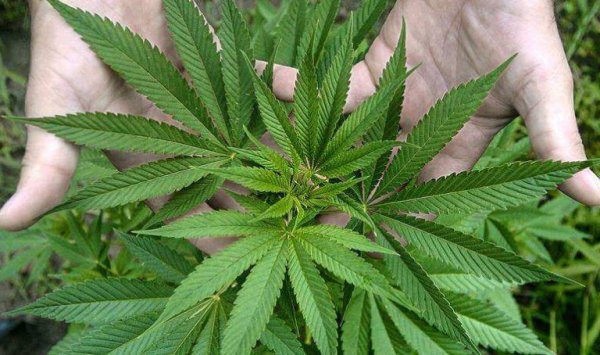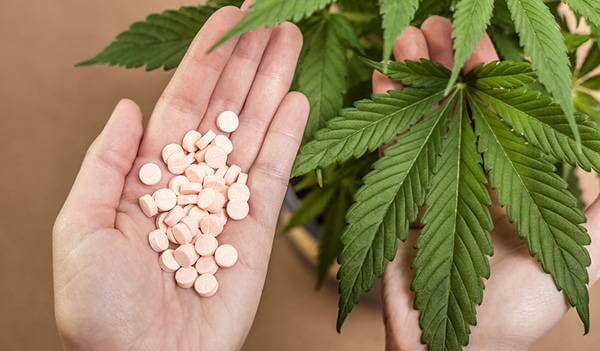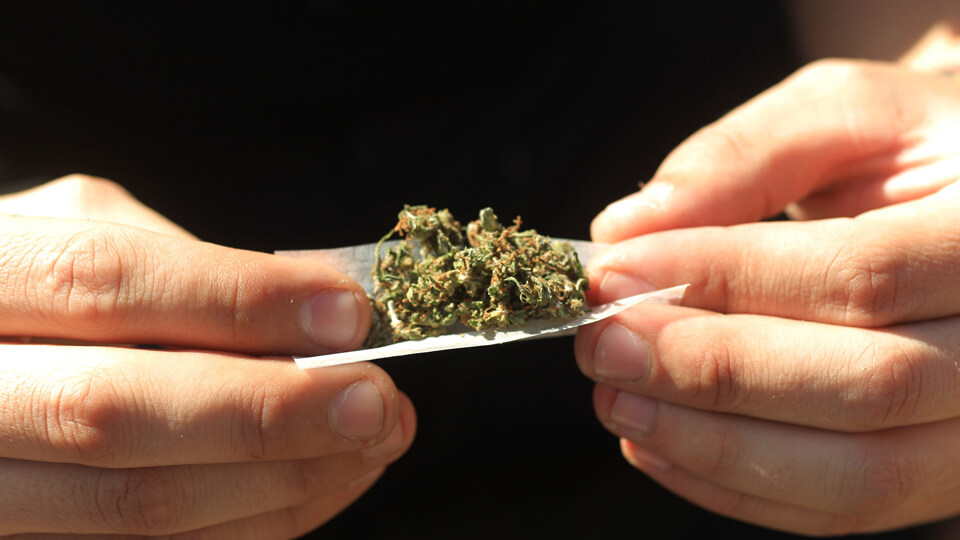Myths, Truths, and Half-Truths about Marijuana

The first misconception about marijuana is that it shouldn’t actually be spoken of in the singular, but in the plural. There are millions of varieties.
Not all have the same quality. In fact, the effects it produces are very different depending on the strain from which it comes.
Another very common error is to try to generalize the effects it will have on a person’s behavior. Just like how a hamburger can be completely harmless to one person, it can lead to a crisis to another, even death. The same goes for marijuana.
“Cannabis is becoming increasingly understood that it is a very interesting and versatile medicine with much less toxicity than some of the pharmaceutical products it replaces”.
-Lester Grinspoon, Professor Emeritus of Psychiatry at Harvard Medical School-
What is true is that the consumption of marijuana has increased and may increase even more after the legalization of this psychoactive substance in many states and countries.
And it’s more than an issue of “good” or “bad”. Instead, everything depends on the circumstances, motivations and environments surrounding its consumption.
Types of marijuana and their effects
There are many varieties of marijuana seeds. However, there are three major groups. These are: Cannabis sativa, Cannabis sativa forma indica, and Cannabis ruderalis.
The first is grown in America, Asia and Africa. Usually it has stimulating effects, leading to a more positive mood and increased appetite.

Second, Cannabis Indica is grown in India and Pakistan. It has relaxing effects and is also used to reduce physical pain, especially in muscles or bones.
Finally, Cannabis ruderalis is native to Siberia and Liberia. It also has sedative effects.
Other varieties have been created from these three main ones, these called “hybrids.” There are millions.
The effects of each of these depend on the combination. They range from practically poisons to refined for medicinal use.
Some truths about marijuana
Marijuana has gotten too bad of a rap in some areas and too much good publicity in others. It’s said, for example, that it is harmless, which is false.
In physical terms, smoking marijuana can have the same effects on the lungs as tobacco. In both cases there is combustion, and tar particles reach the respiratory system. This can cause cancer and other diseases.
In addition, excessive consumption and long-term use can damage neurons. This affects memory and concentration.
In fact, although many claim the opposite, marijuana hinders memory and attention. Therefore, you should not do risky activities under its influence.

Almost all types of marijuana are very effective on pain. As it is a sedative, it comes in handy for muscular or nerve pains.
Likewise, it is very good for people in chemotherapy. It reduces the nausea and discomfort that these procedures cause.
Marijuana is also a relaxant. Without a doubt, this is the main reason why millions of people in the world consume it, though it is still illegal in most countries. This plant has antidepressant effects.
Some myths about marijuana
They say that marijuana generates dependency, but this is not true. Or at least it does not from the physical point of view.
However, people who have a tendency to addiction may develop a strong dependence. When there are genetic factors that induce chemical dependence, marijuana almost always becomes a gateway to all types of psychoactive drugs.
The positive recreational use of marijuana depends on each person. If you consume it in moderation, it helps you relax and stabilize yourself.
On the other hand, if there is compulsive consumption, sooner or later it will cause problems.

Sometimes people give marijuana abilities that it does not have. People say, for example, that it increases creativity. However, this isn’t the case.
What it does increase are visual and auditory perceptions, but since at the same time it hinders concentration, it does not create conditions for better creativity. In fact, it slows these conditions down.
Marijuana, like other plants of its kind, can contribute to human health and happiness. Its illegal status in many areas is perhaps its greatest danger, since it leads to the absence of quality control over it.
Therefore adulterated forms are unfortunately widespread. Badly made, or badly consumed, it can become a powerful poison.
On the contrary, if people cultivate, market and consume it in a responsible manner, it can become a valuable aid for the physical and emotional health of some people who have certain conditions.
The first misconception about marijuana is that it shouldn’t actually be spoken of in the singular, but in the plural. There are millions of varieties.
Not all have the same quality. In fact, the effects it produces are very different depending on the strain from which it comes.
Another very common error is to try to generalize the effects it will have on a person’s behavior. Just like how a hamburger can be completely harmless to one person, it can lead to a crisis to another, even death. The same goes for marijuana.
“Cannabis is becoming increasingly understood that it is a very interesting and versatile medicine with much less toxicity than some of the pharmaceutical products it replaces”.
-Lester Grinspoon, Professor Emeritus of Psychiatry at Harvard Medical School-
What is true is that the consumption of marijuana has increased and may increase even more after the legalization of this psychoactive substance in many states and countries.
And it’s more than an issue of “good” or “bad”. Instead, everything depends on the circumstances, motivations and environments surrounding its consumption.
Types of marijuana and their effects
There are many varieties of marijuana seeds. However, there are three major groups. These are: Cannabis sativa, Cannabis sativa forma indica, and Cannabis ruderalis.
The first is grown in America, Asia and Africa. Usually it has stimulating effects, leading to a more positive mood and increased appetite.

Second, Cannabis Indica is grown in India and Pakistan. It has relaxing effects and is also used to reduce physical pain, especially in muscles or bones.
Finally, Cannabis ruderalis is native to Siberia and Liberia. It also has sedative effects.
Other varieties have been created from these three main ones, these called “hybrids.” There are millions.
The effects of each of these depend on the combination. They range from practically poisons to refined for medicinal use.
Some truths about marijuana
Marijuana has gotten too bad of a rap in some areas and too much good publicity in others. It’s said, for example, that it is harmless, which is false.
In physical terms, smoking marijuana can have the same effects on the lungs as tobacco. In both cases there is combustion, and tar particles reach the respiratory system. This can cause cancer and other diseases.
In addition, excessive consumption and long-term use can damage neurons. This affects memory and concentration.
In fact, although many claim the opposite, marijuana hinders memory and attention. Therefore, you should not do risky activities under its influence.

Almost all types of marijuana are very effective on pain. As it is a sedative, it comes in handy for muscular or nerve pains.
Likewise, it is very good for people in chemotherapy. It reduces the nausea and discomfort that these procedures cause.
Marijuana is also a relaxant. Without a doubt, this is the main reason why millions of people in the world consume it, though it is still illegal in most countries. This plant has antidepressant effects.
Some myths about marijuana
They say that marijuana generates dependency, but this is not true. Or at least it does not from the physical point of view.
However, people who have a tendency to addiction may develop a strong dependence. When there are genetic factors that induce chemical dependence, marijuana almost always becomes a gateway to all types of psychoactive drugs.
The positive recreational use of marijuana depends on each person. If you consume it in moderation, it helps you relax and stabilize yourself.
On the other hand, if there is compulsive consumption, sooner or later it will cause problems.

Sometimes people give marijuana abilities that it does not have. People say, for example, that it increases creativity. However, this isn’t the case.
What it does increase are visual and auditory perceptions, but since at the same time it hinders concentration, it does not create conditions for better creativity. In fact, it slows these conditions down.
Marijuana, like other plants of its kind, can contribute to human health and happiness. Its illegal status in many areas is perhaps its greatest danger, since it leads to the absence of quality control over it.
Therefore adulterated forms are unfortunately widespread. Badly made, or badly consumed, it can become a powerful poison.
On the contrary, if people cultivate, market and consume it in a responsible manner, it can become a valuable aid for the physical and emotional health of some people who have certain conditions.
This text is provided for informational purposes only and does not replace consultation with a professional. If in doubt, consult your specialist.







